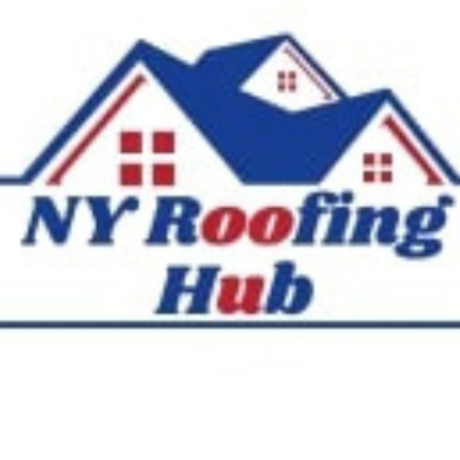When planning a roof replacement, choosing the right materials is one of the most important decisions homeowners face. The performance, durability, appearance, and cost of your roof will all depend on what materials you use. As a leading New York Roofing Company, we’ve put together this comprehensive roof replacement material checklist to help you prepare confidently and make informed decisions. Whether you’re hiring New York roofing contractors or seeking roofing services near me, having a complete list ensures your project stays on track.
Why a Material Checklist Matters
A detailed checklist helps ensure nothing is overlooked during your roofing project. Missing even one critical item could delay the job or lead to quality issues down the line. At New York Roofing Company, we’ve seen firsthand how being organized can save time, reduce costs, and ensure the finished roof performs as expected.
1. Roofing Shingles or Primary Covering
The most visible and vital component of any roof is the surface material:
- Asphalt Shingles – Affordable and widely used, especially in New York homes.
- Architectural Shingles – More durable and stylish than traditional 3-tab shingles.
- Metal Panels – Long-lasting and excellent for energy efficiency.
- Clay or Concrete Tiles – Beautiful but heavier and often require reinforced framing.
- Slate Roofing – High-end, extremely durable, but also costly and heavy.
- Wood Shakes or Shingles – Offer a natural look but need regular maintenance.
New York Roofing Company recommends architectural asphalt shingles for most residential properties due to their excellent balance of cost, durability, and aesthetics.
2. Roof Decking (Sheathing)
The roof decking is the base layer attached to the roof trusses. It provides structural support and a surface for shingles or other coverings.
- Most commonly made from OSB (Oriented Strand Board) or Plywood
- Should be inspected for rot or water damage before reuse
- Replacing compromised decking is critical for a long-lasting roof
If you’re working with New York roofing contractors, ask them to evaluate your existing decking during the initial inspection.
3. Underlayment
This moisture barrier sits between your shingles and roof decking. It adds extra protection from water and wind.
- Felt Paper (Tar Paper) – Traditional but less common now.
- Synthetic Underlayment – Lightweight, durable, and more water-resistant.
- Ice and Water Shield – Installed along edges and valleys to protect against ice dams.
Top-rated New York Roofing services always include proper underlayment installation in their quotes.
4. Flashing
Roof flashing is metal installed around protrusions, valleys, and roof edges to direct water away from critical areas.
- Made from aluminum, copper, or galvanized steel
- Common flashing areas: chimneys, skylights, vents, and valleys
- Critical to prevent water leaks
Roofing services near me often emphasize flashing as a key area to inspect during roof replacement. Always confirm if flashing will be reused or replaced.
5. Drip Edge
Drip edges are metal strips installed at roof edges to prevent water from getting under shingles and causing rot.
- Required by most building codes, including in New York
- Improves overall appearance and water flow off the roof
Any New York Roofing Company worth its name will never skip installing drip edges—it’s a small but essential detail.
6. Ventilation Materials
Proper attic ventilation helps extend the life of your roof by reducing moisture buildup and controlling temperatures.
Types of vents include:
- Ridge Vents
- Soffit Vents
- Gable Vents
- Powered Attic Fans
Make sure New York roofing contractors inspect and upgrade your roof ventilation during replacement to avoid premature shingle aging and moisture problems.
7. Nails and Fasteners
Roofing nails may seem minor, but using the correct type and quantity is crucial for durability and wind resistance.
- Galvanized or Stainless Steel Nails are preferred
- Staples or improper nails can void manufacturer warranties
Professional roofing services near me always follow manufacturer guidelines for fasteners to ensure warranty compliance.
8. Roofing Cement and Sealants
Sealants are used around flashing, vents, and roof joints to provide waterproof protection.
- Choose products compatible with your roofing materials
- Replace old or cracked sealant for maximum protection
Your chosen New York Roofing Company will apply fresh sealants as part of any complete roof replacement.
9. Starter Shingles
Starter shingles are installed along eaves and rakes before regular shingles to provide a secure base and improve wind resistance.
- Prevent shingle blow-offs
- Align and secure first row of main shingles
Many DIYers forget starter shingles, but professional New York roofing contractors always include them in materials and installation.
10. Waste Disposal and Cleanup Materials
Roof replacement creates a lot of waste. Ensure the project includes:
- Dumpster rental
- Tarps and magnetic rollers for nails
- Cleanup and haul-away services
High-quality New York Roofing services will manage all aspects of debris removal and leave your property clean and safe.
Bonus: Safety Equipment (For DIYers)
If you plan to replace a roof yourself, don’t skip safety gear:
- Roof harness and anchor
- Ladder stabilizer
- Gloves and goggles
However, we always recommend hiring licensed New York roofing contractors—roofing is dangerous, and professionals have the right equipment and experience.
Final Thoughts
Replacing your roof is a major investment, and preparation is key to a successful outcome. This material checklist, prepared by New York Roofing Company, ensures you know what’s involved from start to finish.
Whether you’re considering a minor repair or a complete tear-off, always work with reputable professionals who offer quality New York Roofing services and understand the unique weather challenges of our region.
Ready to begin? Search roofing services near me or contact New York Roofing Company today for a no-obligation consultation and quote.







